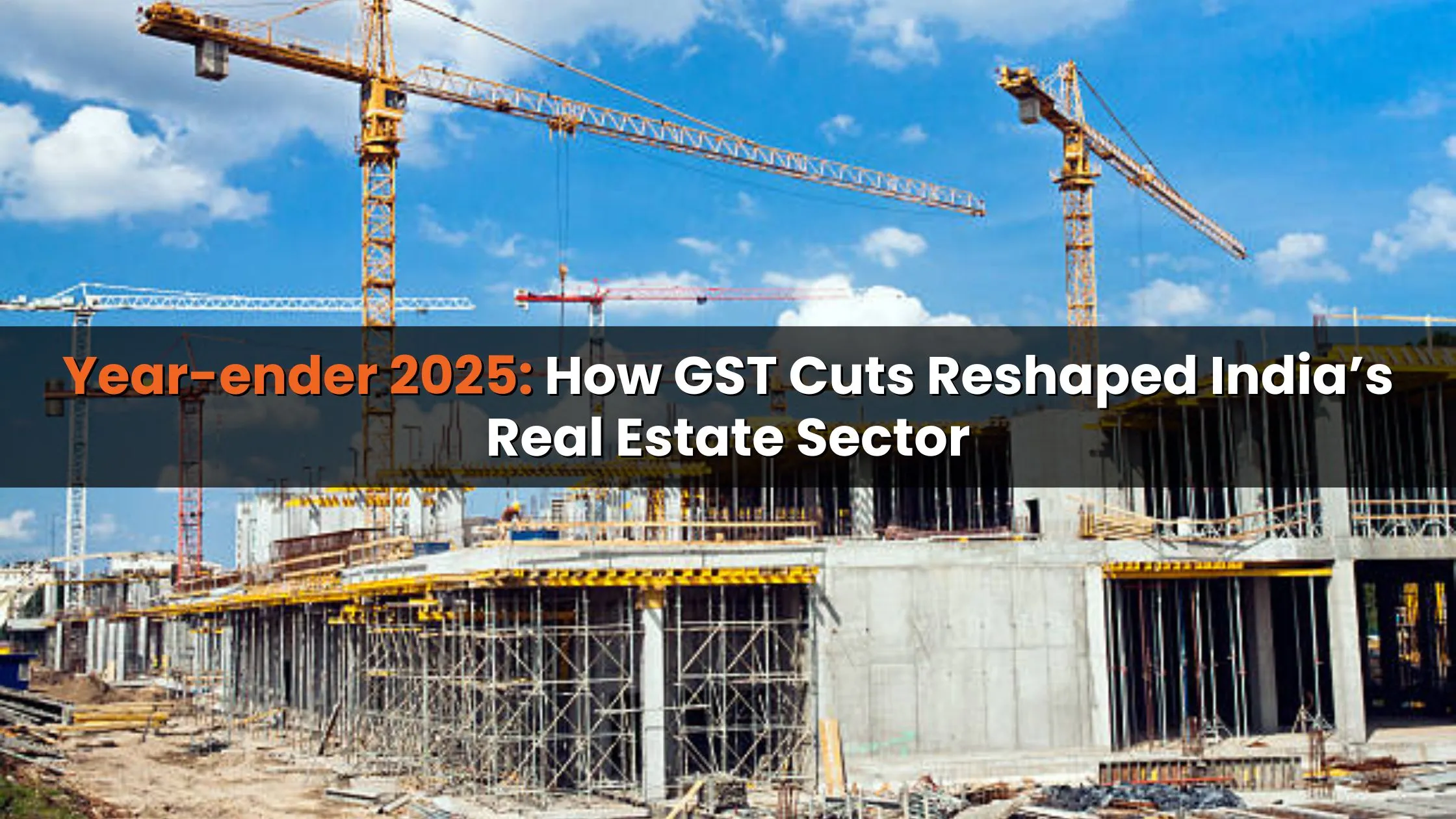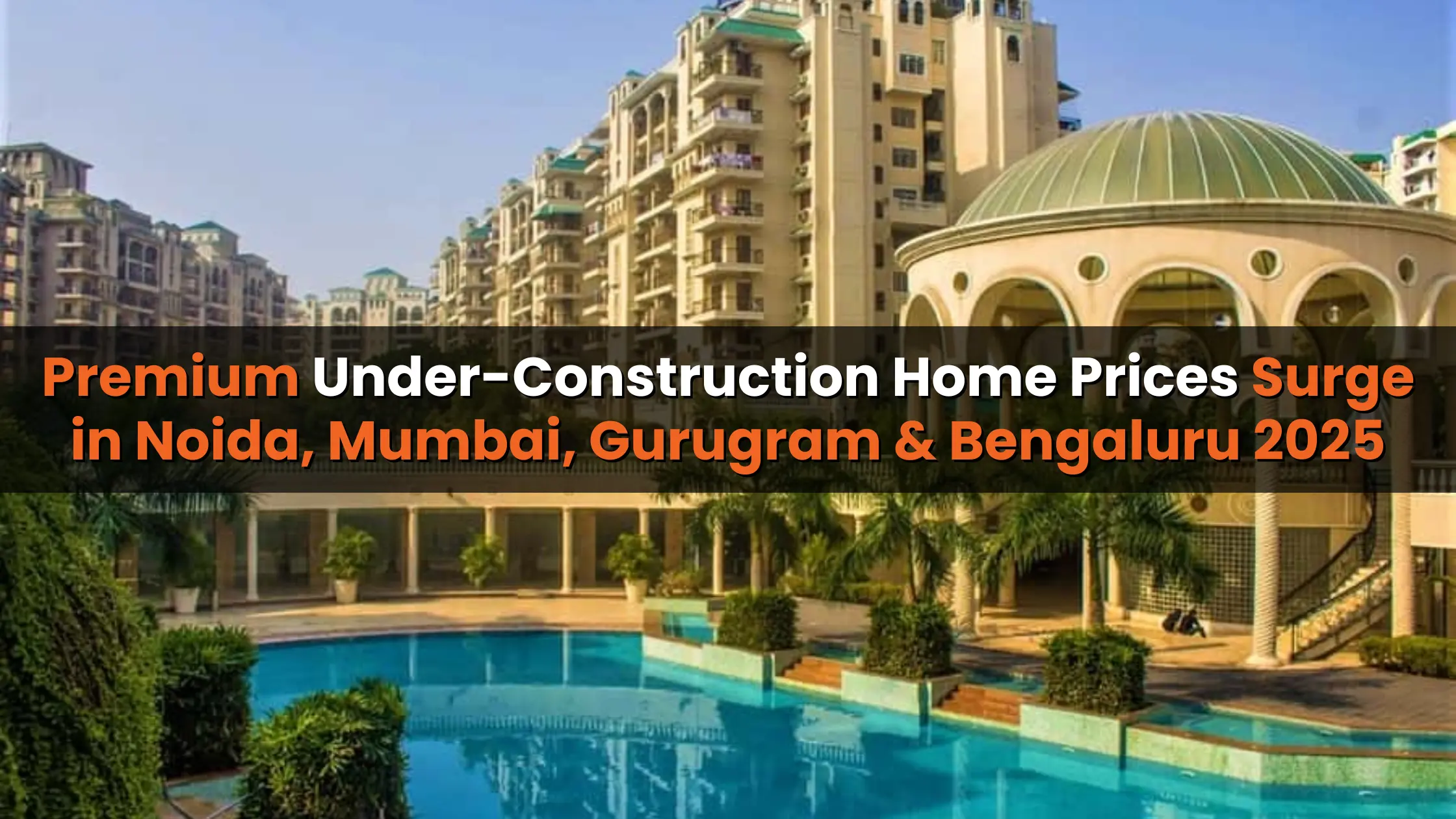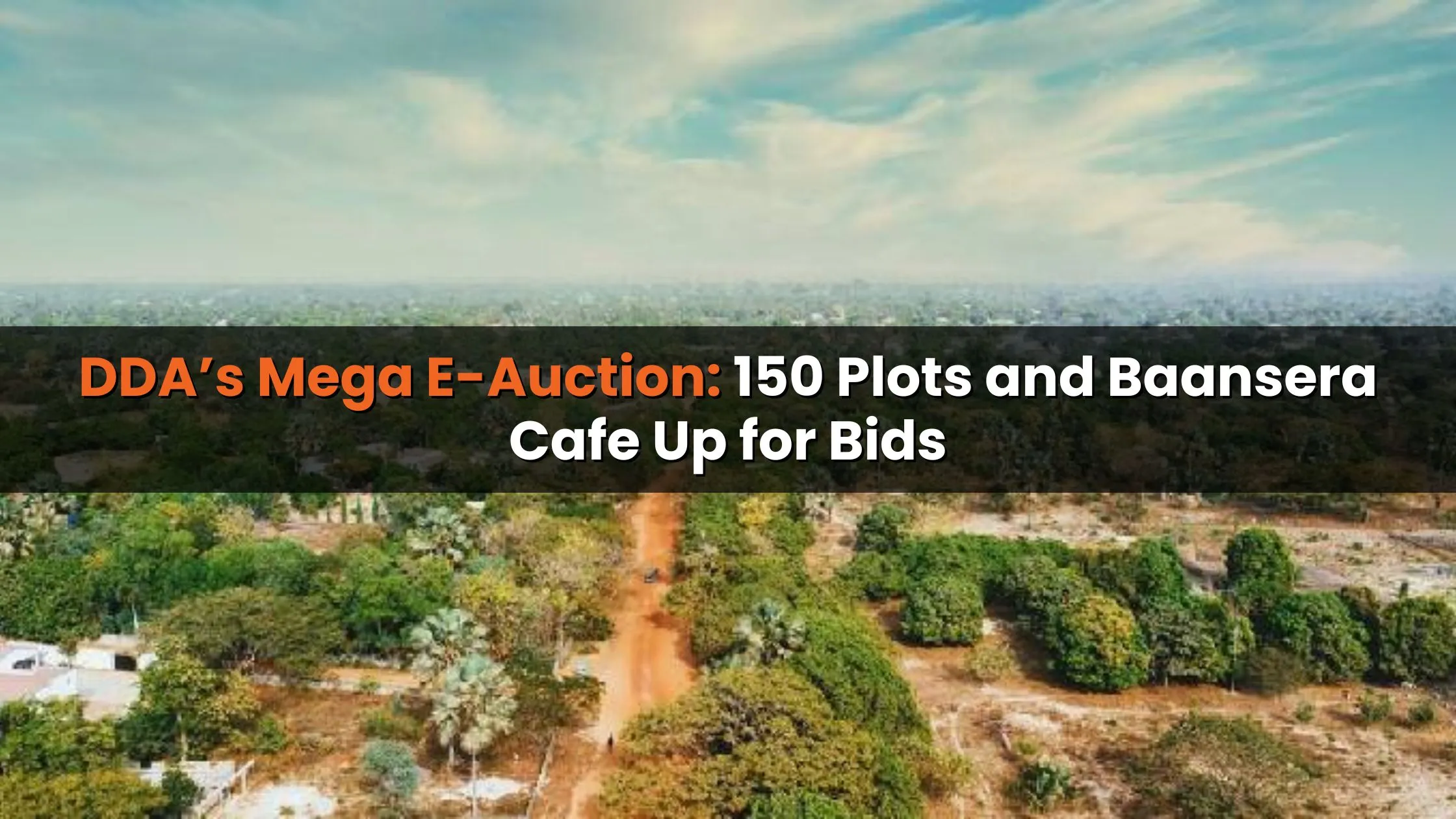Table of Content
The Indian housing market experienced a mixed performance in the third quarter of 2025. On one hand, housing sales in Q3 2025 declined by over 9% compared to the same period last year due to affordability pressures, uneven demand, and seasonal factors. On the other hand, the overall value of sales surged 14% year-on-year, reflecting the growing dominance of the luxury and ultra-luxury housing segments.
The latest report by Anarock highlights that while affordability remains a challenge for many homebuyers, big-ticket purchases in major metros such as the Mumbai Metropolitan Region (MMR) and Pune are driving momentum. Meanwhile, the National Capital Region (NCR) reported the steepest rise in housing prices, pointing to strong demand despite sales volume pressure.
Housing Sales Performance in Q3 2025
In the July–September quarter of 2025, approximately 97,080 housing units were sold across the top seven cities. This was a sharp decline compared to the 1.07 lakh units sold in Q3 2024, representing a drop of over 9%.
The slowdown was attributed to multiple factors:
- Affordability concerns as home prices climbed steadily over the last few years.
- Rising input and borrowing costs that pushed overall property prices higher.
- Uneven demand across cities, with some markets bucking the national trend.
- Seasonal slowdown during the monsoon and the inauspicious Shradh period, traditionally considered unfavorable for property transactions.
Despite this dip in volume, the value of transactions told a different story. The total sales value jumped from around ₹1.33 lakh crore in Q3 2024 to ₹1.52 lakh crore in Q3 2025 a robust 14% rise. This shift indicates that high-value homes, particularly in the luxury category, were the primary drivers of market activity.
Also Read: Housing Sales in Mumbai Metropolitan Region and Pune Drop 17%, Launches Slide 5%
City-Wise Housing Market Highlights
Performance varied across India’s top property hubs:
- Mumbai Metropolitan Region (MMR):
With about 30,260 units sold, MMR retained its position as the largest contributor to housing sales in Q3 2025. The city’s market continues to thrive on strong demand for both luxury and mid-segment homes. - Pune:
Recording approximately 16,620 unit sales, Pune was the second-highest contributor. Together, MMR and Pune accounted for a significant 48% of total housing sales in Q3 2025. - Chennai:
One of the few cities to buck the overall trend, Chennai posted a 33% year-on-year growth in sales. - Kolkata:
Also recorded positive momentum with a modest 4% increase in annual sales.
Other major cities, including NCR, Bengaluru, and Hyderabad, saw annual declines, reflecting affordability challenges and selective demand patterns.
Housing Price Trends in Q3 2025
One of the most striking highlights of housing sales in Q3 2025 was the sharp increase in property prices despite weaker volumes. Average residential prices across the top seven cities climbed 9% year-on-year.
- NCR saw the steepest rise, with property prices surging 24% YoY, reflecting robust demand in premium localities.
- Bengaluru reported the second-highest increase at 10% YoY, driven by IT-sector resilience and strong demand in the mid-to-premium housing categories.
- Other cities recorded moderate single-digit growth, suggesting a cooling-off from the double-digit price jumps observed in earlier years.
This trend indicates that while the number of units sold decreased, buyers in the higher-value categories continued to dominate market activity, pushing the average ticket size upward.
New Housing Supply Across Segments
Developers introduced fresh supply selectively in Q3 2025, with overall new launches down 5% year-on-year. The composition of new supply, however, highlights the changing market dynamics:
- Luxury housing (above ₹1.5 crore): 38% of new supply, making it the largest segment.
- Premium housing (₹80 lakh–₹1.5 crore): 24% share.
- Mid-segment (₹40–₹80 lakh): 23% share.
- Affordable housing (below ₹40 lakh): Lowest share at just 16%.
Clearly, developers are focusing more on premium and luxury homes, responding to strong demand in these categories while affordable housing continues to shrink in supply.
City-Specific New Supply Updates
The scale of new launches varied across cities:
- MMR: ~29,565 units launched, the highest among all metros, reaffirming its status as India’s largest housing market.
- Pune: ~19,375 units launched, driven by steady mid-segment and premium demand.
- NCR: ~12,645 units added in Q3 2025, representing an 11% yearly decline and a 33% quarterly drop. Interestingly, nearly 70% of NCR’s new supply was in the luxury category, signaling a tilt toward high-end buyers.
- Bengaluru: ~15,190 units added, marking a 5% YoY decline. Around 79% of new supply was concentrated in the ₹80 lakh–₹2.5 crore price range, underscoring its premium-heavy profile.
Housing Inventory Levels
Despite the slowdown in sales volume, inventory levels across the top seven cities remained relatively stable. Available stock declined only marginally from 5.64 lakh units in Q3 2024 to 5.61 lakh units in Q3 2025.
This suggests that demand continues to absorb supply at a healthy pace, even though affordability challenges are weighing on transaction numbers.
Also Read: Bengaluru to Launch Mobile App for e-Khata, Promises Faster Property Services
Expert Insights and Market Outlook
Anuj Puri, Chairman of Anarock Group, noted that while affordability issues remain a concern, the housing sector is still displaying resilience. Interestingly, housing sales in Q3 2025 recorded a 1% quarterly growth compared to Q2, despite monsoons and seasonal slowdowns.
He further highlighted:
- Developers are gearing up for the festive season in Q4 2025, with multiple new project launches lined up.
- Buyer sentiment is expected to improve during the festive period, traditionally a high-transaction phase in the Indian housing market.
- External factors such as the recently announced US H1-B visa norms could indirectly affect housing demand, particularly in IT-driven markets like Bengaluru and Hyderabad.
Conclusion
In summary, housing sales in Q3 2025 highlight a unique dual trend while unit sales dipped by over 9% year-on-year, the total market value rose significantly due to higher-value transactions. MMR and Pune continued to dominate in terms of sales volume, while NCR led with the steepest rise in prices.
The luxury segment remains the strongest driver of both new supply and sales value, whereas affordable housing is losing ground in India’s urban markets. With the festive season around the corner, developers are optimistic about a short-term sales boost, but affordability challenges could keep overall growth moderate in the coming quarters.

_1758875974.webp)





Ans 1. Housing sales declined over 9% year-on-year due to affordability pressures, higher input and borrowing costs, and seasonal factors such as the monsoon and Shradh period. However, high-value purchases in luxury and premium segments drove the overall market value up by 14%.
Ans 2. The Mumbai Metropolitan Region (MMR) and Pune were the top contributors, accounting for nearly 48% of total sales. MMR sold around 30,260 units, while Pune recorded approximately 16,620 units.
Ans 3. The National Capital Region (NCR) witnessed the steepest price growth at 24% year-on-year. Bengaluru followed with a 10% increase. Other cities, including MMR, Pune, Chennai, Kolkata, and Hyderabad, recorded moderate price growth.
Ans 4. New launches declined 5% year-on-year, with developers focusing more on luxury and premium homes. Luxury housing accounted for 38% of new supply, followed by premium (24%), mid-segment (23%), and affordable housing (16%).
Ans 5. MMR led with approximately 29,565 new units launched, followed by Pune with 19,375 units. NCR saw a decline with 12,645 new units, of which nearly 70% were luxury homes.
Ans 6. Luxury and premium housing segments are the main drivers, reflecting growing demand from high-value buyers. Mid-segment sales remain stable, while affordable housing is seeing reduced new supply.
Ans 7. Inventory remained largely stable, with available stock slightly declining from 5.64 lakh units in Q3 2024 to 5.61 lakh units in Q3 2025, indicating that demand is still absorbing supply efficiently.
Ans 8. Affluent buyers are less affected by rising prices, and developers are increasingly targeting high-end segments with new projects. This has pushed up both transaction values and the proportion of luxury supply in cities like NCR, MMR, and Pune.
Ans 9. Developers are optimistic, with multiple launches planned for Q4 2025. Historically, the festive season sees a surge in transactions, which could improve buyer sentiment and sales volumes.
Ans 10. Yes, rising property prices and borrowing costs may continue to limit demand among mid- and lower-income buyers, keeping overall growth moderate in the near term.